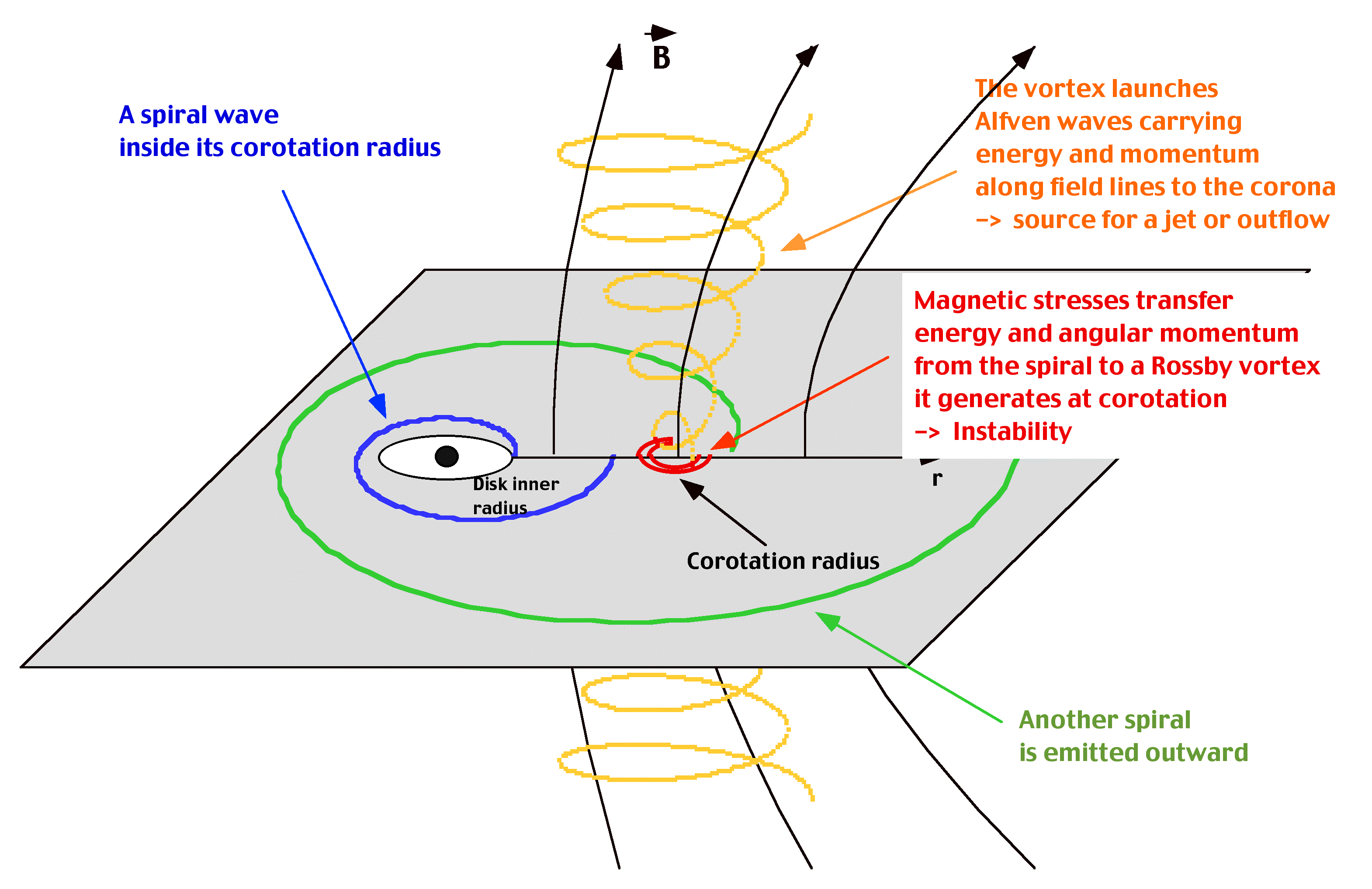
.
Abstract
The major problem in accretion physics comes from the origin of angular momentum transfer in the disk. My thesis deals with a mechanism (the Accretion-Ejection Instability, AEI) able to explain and link together accretion in the inner region of the disk and ejection. This instability occurs in magnetized accretion disk.
We first study the impact of relativistic effects on the instability, particularly on the m=1 mode. and compared the results with the Quasi-Periodic Oscillation (QPO) observed in microquasars. In the second part, we study analytically and numerically the Alfven wave emission mechanism which re-emits the angular momentum and energy taken from the inner region of the disk toward the corona. The last part deals with MHD numerical simulation. First we present a 2D non linear disk simulation which contributes to QPO modelisation. In the last chapter is explained a begining collaboration on 3D simulation in order to study the Alfven wave emission in the corona.
.
The Accretion-Ejection Instability

The Accretion-Ejection Instability is global spiral instability.
In that respect, it is similar to the one occuring in galaxy but
driven here by magnetic field instead of self-gravity.
This instability requires a magnetic field of the order of equipartition
with gas pressure in the inner part of the disk.
This instability creates a rotating spiral pattern in the disk.
The most unstable is the 1-armed spiral which rotates at a
frequency of the order of 0.1-0.3 the rotation
frequency at the inner edge of the disk. As we have a spiral wave in
a differentially rotating disk there exist a prefered radius, namely
the corotation radius, where the wave rotate at the same speed as
the gas.
Because of differential rotation and differential vorticity this spiral wave coupled with the Rossby vortex it generates at its corotation. Therefore the spiral wave grows by extracting energy and angular momentum from the inner part of the disk, which allow accretion to proceed, and storing them in the Rossby vortex. With this instability accretion energy and angular momentum are transported by waves and do not heat up the disk except by the mean of spiral shocks.
The figure is a basic representation of the instability mecanism. Between the inner radius of the disk and corotation a standing wave pattern form. Indeed the spiral propagates from the inner edge of the disk toward the corotation where it gets reflected. During the reflection on the corotation a part of the energy is transmitted to the Rossby vortex. This causes amplification of the spiral wave because inside corotation the spiral has a negativ energy (-1), therefore the reflected spiral has a higher amplitude (-1-epsilon) than the original one. We obtain in the inner region of the disk a cavity similar to the electromagnetic one.
This physical description was obtained in the simplified model of a thin disk in vaccum. If now one takes into account a low density corona above the disk. The vortex twist the foot point of the field line and this torsion propagate as Alfven waves. Throught this mecanism the accretion energy and angular momentum removed from the inner part of the disk are send toward the corona, where it might power a wind or a jet. In fact, the computation of the Alfven wave emission was done in Varniere and Tagger, 2002, showing that a large amount of the accretion energy is send toward the corona as Alfven waves. The AEI thus appears as a very good candidate to connect accretion and ejection in the inner region of a magnetized disk.
.
Somes Results
